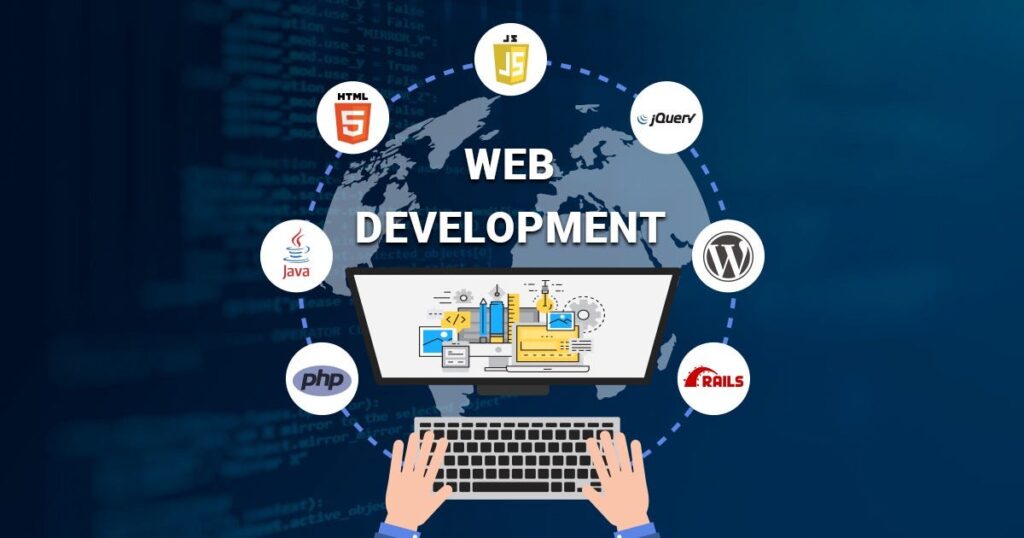- August 17, 2019
- by nishantsingh.ms123
- Link Building
- 2 Comments

The Ultimate Guide to Website Development
Hey everyone, welcome back to my channel! Today, we’re diving into the world of website development. Whether you’re a business owner looking to build your first website, a hobbyist wanting to create a personal blog, or someone interested in web development, this video will give you a comprehensive overview of the key aspects of creating a successful website.
What is Website Development
Website development involves building and maintaining websites. It encompasses various aspects including web design, web content development, client-side/server-side scripting, and network security configuration, among other tasks. Essentially, it’s everything that makes a website function and look good.
Why is Website Development Important
- Online Presence: In today’s digital age, having a website is crucial for establishing your presence online. It’s often the first point of contact between your business and potential customers.
- Credibility and Trust: A well-designed website can enhance your credibility and build trust with your audience.
- Accessibility: A website makes your business accessible to people worldwide, 24/7.
- Marketing: It serves as a platform to promote your products or services, share updates, and engage with your audience.
Steps to Develop a Website
- Planning and Strategy
Define Your Goals: What is the purpose of your website? Is it to sell products, share information, or create a community?
Know Your Audience: Understanding who your target audience is will help you design a website that meets their needs. Research Competitors: Look at what your competitors are doing and find ways to differentiate your site.
- Choosing a Domain Name and Hosting
Domain Name: Choose a domain name that is short, memorable, and relevant to your brand.
Web Hosting: Select a reliable web hosting service that offers good uptime, customer support, and scalability.
- Designing Your Website
User Experience (UX): Focus on creating a website that is easy to navigate, with a clear layout and intuitive design.
User Interface (UI): This involves the visual aspects of the site. Use a consistent color scheme, typography, and imagery that reflect your brand.
Responsive Design: Ensure your website looks good on all devices, including desktops, tablets, and mobile phones.
- Development
Front-End Development: This includes everything that users interact with directly, like HTML, CSS, and JavaScript.
Back-End Development: This involves the server, database, and application that work behind the scenes to deliver information to the front end. Common languages include PHP, Python, Ruby, and Java.
- Content Creation
Text Content: Create engaging and relevant content for your audience. This includes homepage text, about us pages, blog posts, product descriptions, etc.
Media Content: Use high-quality images, videos, and graphics to make your site visually appealing.
- Testing and Launch
Usability Testing: Make sure everything works as intended. Test on different browsers and devices to ensure compatibility.
Performance Testing: Check your site’s speed and load times. Tools like Google PageSpeed Insights can be helpful.
SEO: Optimize your website for search engines to increase visibility. This includes using keywords, and meta tags, and creating a sitemap.
- Maintenance and Updates
Regular Updates: Keep your content fresh and update software and plugins regularly to ensure security.
Monitoring: Use tools like Google Analytics to track your website’s performance and make data-driven decisions.
Tools and Technologies
- Content Management Systems (CMS): Platforms like WordPress, Joomla, and Drupal make it easier to manage and update your website content.
- Website Builders: Tools like Wix, Squarespace, and Weebly offer drag-and-drop interfaces for building websites without coding.
- Code Editors: Tools like Visual Studio Code, Sublime Text, and Atom are popular among developers for writing code.
- Frameworks: Front-end frameworks like Bootstrap and Foundation help create responsive designs quickly. Back-end frameworks like Laravel (PHP), Django (Python), and Rails (Ruby) streamline server-side development.
- Version Control: Git and platforms like GitHub or GitLab are essential for managing changes to your codebase and collaborating with other developers.
Best Practices in Website Development
- Mobile-First Design: Start designing for mobile devices first since a significant portion of web traffic comes from mobile users.
- Performance Optimization: Minimize load times by optimizing images, using lazy loading, and minimizing the use of heavy scripts.
- Accessibility: Ensure your website is accessible to all users, including those with disabilities. This includes using alt text for images. proper heading structures, and keyboard navigability.
- Security: Implement security measures like SSL certificates, regular updates, and strong password policies to protect your site and users data.
- Scalability: Design your website so it can grow with your business. This includes choosing a scalable hosting plan and writing clean, modular code.
Future Trends in Website Development
- Artificial Intelligence (AI): AI can enhance user experience through personalized content, chatbots, and automated customer service.
- Progressive Web Apps (PWAs): PWAs offer a native app-like experience on the web, providing offline capabilities, push notifications, and fast load times.
- Voice Search Optimization: With the rise of smart speakers and voice assistants, optimizing your site for voice search is becoming increasingly important.
- Motion UI: Incorporating animations and transitions can enhance user engagement and make your website more interactive.
- API-First Design: Designing websites with APIs from the start ensures better integration with other services and platforms, providing more flexibility and scalability.
Conclusion
Website development is a multifaceted process that requires careful planning, design, development, and maintenance. By following best practices and staying updated with the latest trends and technologies. you can create a website that not only looks great but also delivers a seamless user experience and achieves your business goals.
Thank you for watching. If you found this video helpful. make sure to like it. comment. and subscribe for more insights into the world of web development. If you have any questions or topics you want me to cover in future videos, drop them in the comments below. See you next time.




Comments (02)